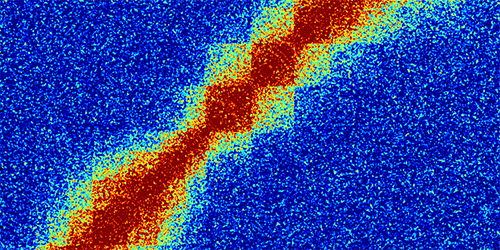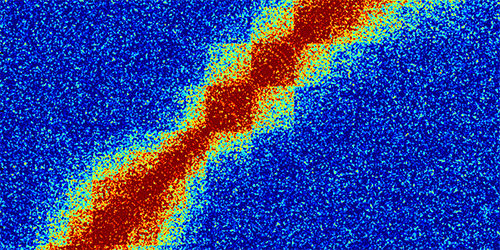A Bumpy Ride for Atoms
Metallic glasses—alloys with an amorphous glasslike structure—are popular technological materials because of their strength and resistance to fracture. However, these properties can decay over time, making the glass more brittle and prone to cracking. How this “aging” occurs, though, is unclear: Macroscopic measurements suggest a slow and steady rearrangement of the alloy’s atoms, but atomic-scale probes indicate a more complex and heterogeneous process. Providing support for this second picture, Zach Evenson at the Technical University Munich, Germany, and colleagues show that aging of a metallic glass occurs via localized and intermittent rearrangements of atoms. Understanding how atoms behave in metallic glasses as they age could allow more robust versions of these materials to be designed.
Evenson and co-workers cooled a palladium-based metallic glass from a liquid to a glassy state. Using x rays, they monitored the subsequent density fluctuations of the alloy as a function of time. These fluctuations are proportional to the frequency of the structural rearrangement of the atoms. They found that just after the glass had formed, it sat in a uniform state with density fluctuations that stayed constant with time. The alloy then entered an “aging” regime with slower density fluctuations. This slow down was not a continuous process; instead, the density fluctuations abruptly decreased to a fixed value, stayed there for a short period of time, and then abruptly dropped again—much like stop-and-go traffic on a congested freeway. Evenson and colleagues think these complicated dynamics indicate a system in which internal stresses, stored at the atomic level, relax in an intermittent and discontinuous manner.
This research is published in Physical Review Letters.
–Katherine Wright





